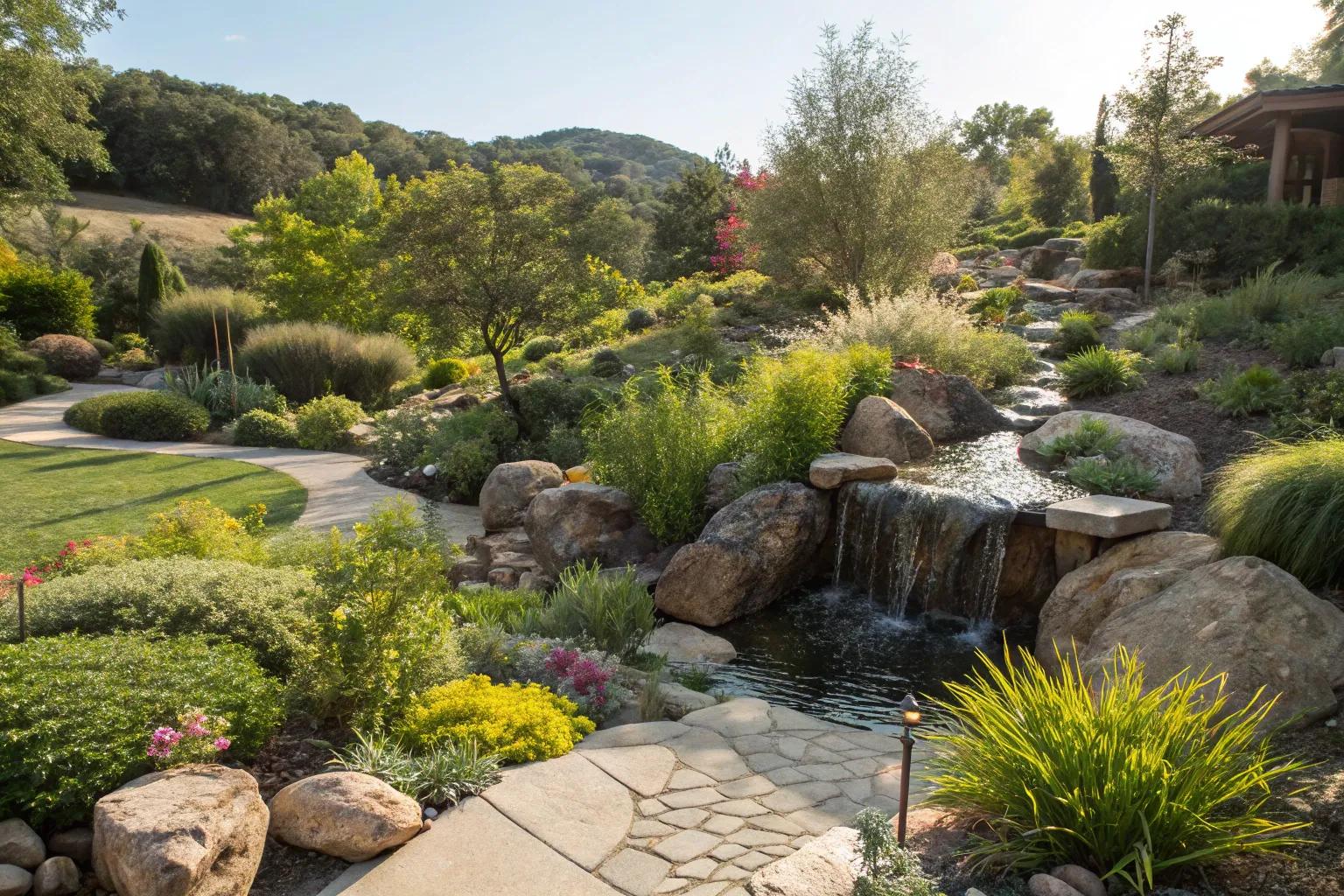Hardscaping is the use of non-living elements in a yard. Think of pathways, walls, and patios. These elements add structure and beauty. They also need to be sustainable. But how can we make them eco-friendly?

Credit: www.garden.eco
Why Choose Sustainable Hardscaping?
Sustainable hardscaping is good for the Earth. It saves resources and reduces waste. It also helps plants and animals. Plus, it looks great. Let’s explore some ideas.
Use Recycled Materials
Recycled materials are great for hardscaping. Old bricks and stones work well. They give a rustic look. Wood from old barns can be lovely. Using recycled items saves resources. It also reduces landfill waste.
Permeable Pavers
Permeable pavers are special. They allow water to flow through. This helps prevent flooding. It also keeps plants healthy. Permeable pavers are made from stones or bricks. They can be arranged in patterns. This adds beauty and function.
Natural Stone
Natural stone is strong and beautiful. Granite, limestone, and sandstone are popular. They look natural and last a long time. Using local stone is best. It reduces transport pollution. Plus, it supports local businesses.
Green Walls
Green walls are living walls. They use plants to cover surfaces. This adds greenery to hardscaping. Green walls help clean the air. They also provide homes for insects. Vertical gardens are also a type of green wall.
Rain Gardens
Rain gardens are special gardens. They collect rainwater. This water then feeds plants. Rain gardens help prevent flooding. They also clean the water. Use native plants for best results.
Solar Lighting
Solar lighting uses the sun’s energy. It is clean and free. No need for wires. Solar lights are easy to install. They charge during the day. At night, they light up pathways and patios. This adds safety and beauty.
Mulch Paths
Mulch is made from wood chips or bark. Mulch paths are easy to make. They are soft and look natural. Mulch keeps the soil cool. It also helps plants grow. Plus, it smells nice!
Eco-Friendly Retaining Walls
Retaining walls hold soil in place. They can be eco-friendly too. Use rocks, wood, or recycled materials. Retaining walls can also be a habitat. Small animals and insects love them.
Water Features
Water features add beauty. They can be eco-friendly too. Use a rainwater collection system. This saves water. Small fountains and ponds are lovely. They attract birds and insects. The sound of water is calming.
Native Plants
Native plants are best for sustainable hardscaping. They need less water and care. They also support local wildlife. Native plants are beautiful. They blend well with hardscaping elements.
Compost
Compost is great for the soil. It adds nutrients and helps plants grow. Use compost in your garden. It is made from kitchen scraps and yard waste. This reduces waste and improves the earth.
Plan Your Space
Good planning is key. Think about what you need. Paths, walls, and gardens need space. Plan for sun and shade. Consider how water will flow. Good planning saves time and resources.

Credit: www.gardeningknowhow.com
Frequently Asked Questions
What Materials Are Best For Sustainable Hardscaping?
Natural stone, recycled concrete, and permeable pavers are eco-friendly choices for sustainable hardscaping.
How Does Permeable Paving Help The Environment?
Permeable paving lets water soak through, reducing runoff and helping recharge groundwater.
Can Sustainable Hardscaping Lower Home Energy Use?
Yes, it reduces heat absorption, keeping outdoor areas cooler and lowering cooling needs.
What Plants Work Well With Sustainable Hardscaping?
Native plants and drought-tolerant species thrive with low water and maintenance needs.
Conclusion
Sustainable hardscaping is important. It helps the Earth and looks nice. Use recycled materials and natural stones. Add green walls and rain gardens. Light up your paths with solar lights. Choose native plants and plan well. Enjoy your beautiful and eco-friendly yard!
4 min read
